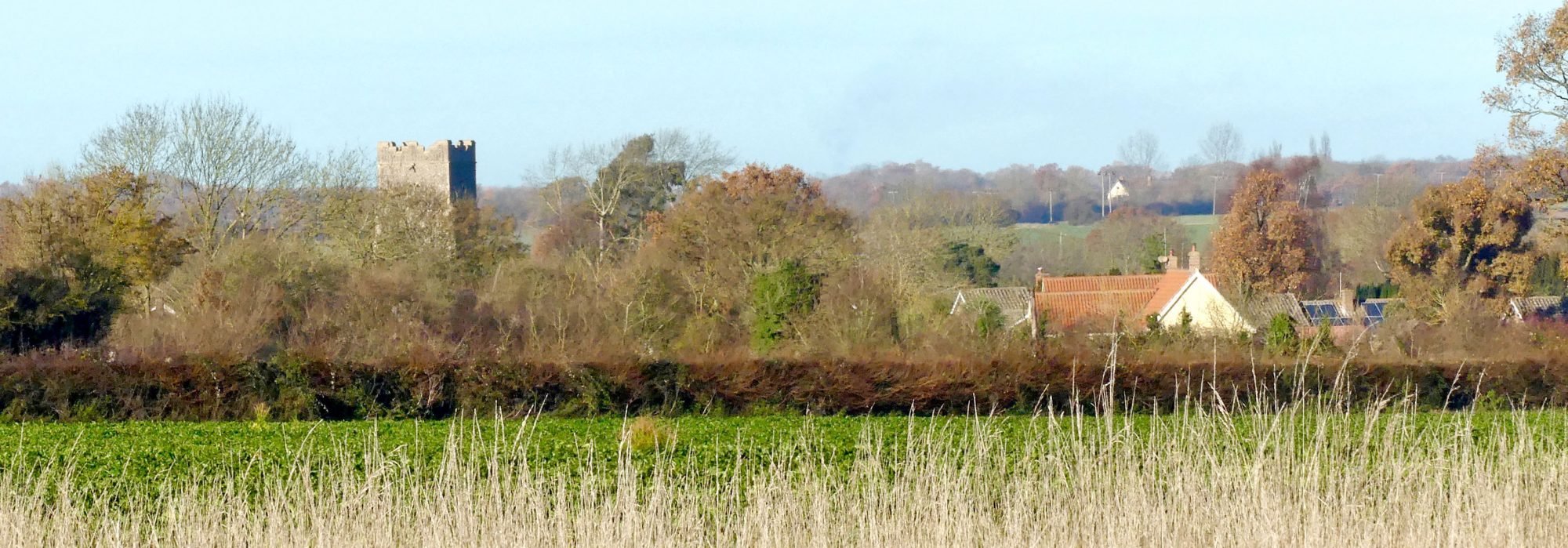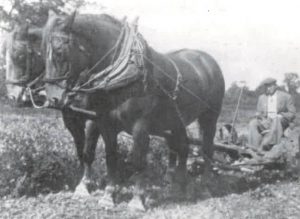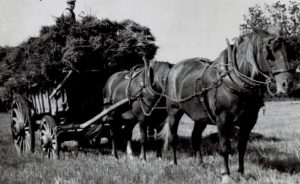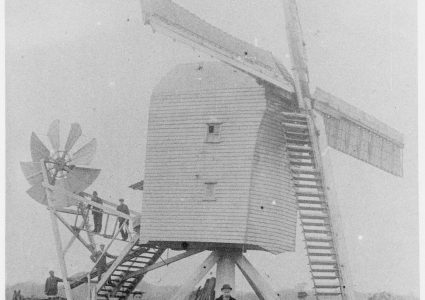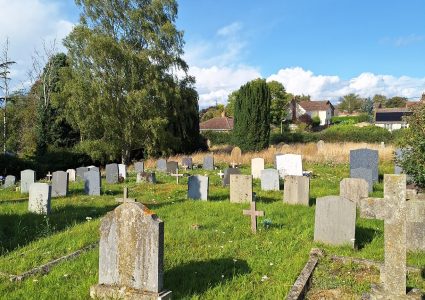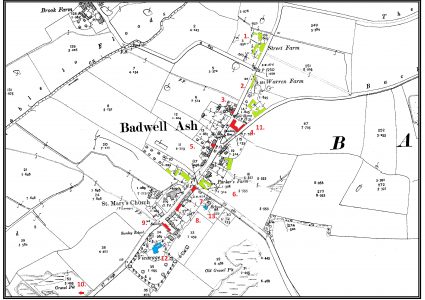The Parish of Badwell Ash in the C19 was primarily an agricultural community. The majority of people worked in agriculture in and around the Parish, even as late as immediately preceding WWI. In the C21, only a very tiny minority now work in agriculture and almost everybody works outside the Parish. The statistics show how much has changed in those 100 years:

Pie chart – 1911 total population

Pie chart – 2011 total population
If you simply look at the working population for both periods, then the contrasts are even starker:

Pie chart – 1911 working population

Pie chart – 2011 working population
As can be seen from these charts above, during the early C20, significantly more than half the working population worked in agriculture in one form or another. During the C19, the number of people working on the land was even greater. Only 20 years earlier, in 1891, that proportion was even higher. This chart below shows the breakdown of the population’s employment in 1891:

Pie chart 1891 population
If you include the farmers themselves, that’s 61% of the whole population of Badwell Ash who were employed on the land in comparison to just 29% in 1911. Additionally, most if not all the “manufacturing” would have been associated with agriculture, such as the Blacksmith, the Wheelwright and the Waggon and Cart Builder. This increases the percentage of people working in agriculture to 66%.
The high numbers of people working in agriculture in Badwell throughout the C19 remained consistent despite the influence of the industrial revolution which caused a decrease in agricultural labourers in other parts of England and Wales. Even the Agricultural Depression in the 1870s and 1880s caused by the dramatic fall in grain prices following the opening up of the American prairies did not, in this area, seem to result in a significant drop of people working in agriculture. The total amount of land growing cereals in England and Wales in 1870 was 9.4m acres; by 1898 this had declined by 22% to 7.4m acres. During the same period, the amount of land under permanent pasture increased by 19%. This situation remained fairly constant until 1914 when it increased dramatically.
The fact that the majority of people in Badwell Ash worked in agriculture is not at all surprising given that Suffolk, along with Norfolk and Cambridgeshire had the highest percentage of arable land in England throughout the C18 and C19.
Given that the majority of people worked on the land throughout the C19, it’s interesting to look at the breakdown between the various “skills” within agricultural employment. Many of these “skills” related to the horse and its use in farming. In Suffolk, that horse was primarily the Suffolk Punch, the oldest breed of heavy horse in Great Britain, which dates from the sixteenth century. Steam mechanisation in late Victorian England started the decline in working horses on the farm but even as late as the 1870s, there were still well over 3.3 million horses in Britain. In 1900, that number had dropped to 1 million, but by the mid C20, mass mechanisation brought about by the demands for increased food production due to World War II and increased farm mechanisation dealt the Suffolk a severe blow and numbers fell dramatically. There were instances of farms getting rid of forty horses in a single day which led to a glut of horses on the market and the only buyers were the slaughter houses. In 1966 only nine Suffolk foals were born. Extinction was imminent.
Today, there are approximately 300 Suffolk Punches in the U.K with 30-40 pure bred foals born each year.
Photos x 2 – Horses working on Shackerland Hall Farm in the 1940s (courtesy of Margaret Symonds)
With that decline went many of the jobs associated with working horses including the Blacksmith, the Saddler, the Farrier, the Wheelwright, the Waggon and Cart Builder, the Harness Maker and many others. These were replaced by machinery where one man in a tractor could do the work of several men and horses. The reasons for the decline were simple. It took a farmer an hour and a half to till 1 acre of ground with five horses and a gang plough. Today, using a 154 horsepower tractor and a chisel plough, a farmer can till 1 acre in five minutes! The charts below show a breakdown between the various categories of agricultural labourers’ jobs in 1851 and 1911 in Badwell:

Pie chart – Agricultural workers in 1851

Pie chart – Agricultural workers in 1911
In the 60 years between the two charts, the extent of job specialism on farms increased. More of the agricultural workers are described as being “skilled” or more particularly, as being “wholly involved with horses”. This is a direct consequence of the increased complexities of farming between the mid C18 and the early C19 with the introduction of crop rotation, mechanisation and an emphasis on an increase in the level of food production needed to feed the ever growing population of England which increased by over 43% in this period. The other major employment throughout this period for both men and women was being a servant. In the early part of the century, almost as many men and women were employed as servants. In 1841 servants represented 26% of the total population of Badwell Ash and this percentage remained relatively consistent right up to the outbreak of WWI as shown by the 1911 census. This situation changed dramatically, however, by the end of the war. Towards the end of the C19, more specialism of servants duties were described in the Census Returns such as Governess, Housekeeper, Cook, Ladies Maid, Chamber Maid, Lady’s Maid, Parlour Maid, Kitchen Maid, Laundry Maid and Scullery Maid. Charts showing the percentage of the Badwell workforce employed as servants:

Pie chart – 1841 population – 458

Pie chart – 1911 population – 367
The other trade category which employed a significant number of people in the village was Retail and Crafts. This includes the Butcher, Baker, Miller, Grocer, Shoemaker, Thatcher, Brickmaker, Plumber, Chimney Sweep etc. This category of trades remained relatively consistent throughout this period at between 10% to 15% of the total population of Badwell. The final category which perhaps employed fewer people but was significantly important to the village was Manufacturing. This included the Blacksmith, the Wheelwright, the Waggon and Cart builder and the Carpenter. Other trades at Badwell Ash described in the Census Returns were so specialised that they have since died out completely. Some of these more unusual trades were:
Acreman: A ploughman
Ankle beater: Young person who helped to drive cattle to market
Backhouse Boy: A Kitchen servant from “the back of the house”
Cordwainer: A shoemaker
Cutler: A Knife maker/seller/sharpener
Drover: A person whose job is to herd sheep or cattle in groups on the roads.
Engine Driver: A steam traction engine driver
Higgler: A person who travels around selling small items
Neatherd: A Cowherd
Ostler: A man employed to look after horses at an Inn
Packman: Similar to a Higgler
Pigman: A person who buys pigs and then sells them off for profit.
Ploughboy: A boy who leads horses drawing a plough
Pot Man: A person who cleared away and washed the pots in a public house
Rat Catcher: A person who catches rats for a living.
Warrener: Someone who looked after a rabbit warren.
Yeoman: A person who holds and cultivates a small landed estate.
